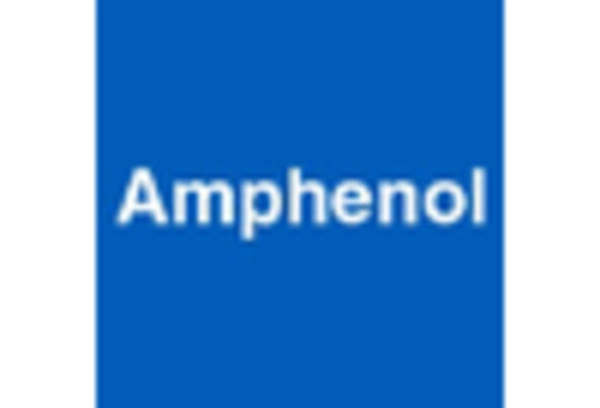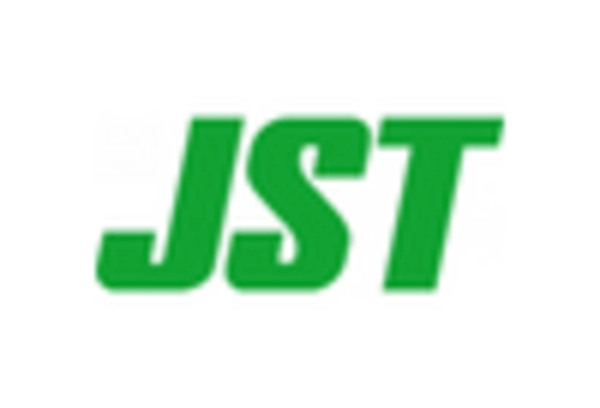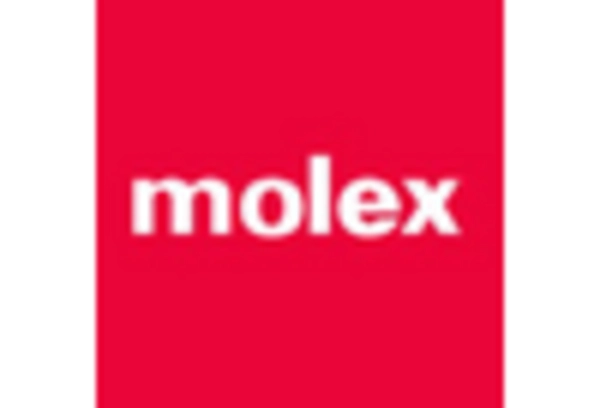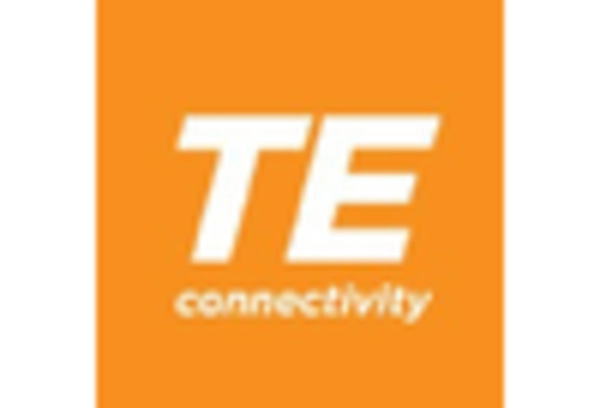Increased Focus on Data Centers
The lcp connectors market is significantly impacted by the growing emphasis on data centers and cloud computing services. As organizations increasingly migrate to cloud-based solutions, the demand for efficient and reliable connectors rises. In 2025, data centers are projected to account for approximately 15% of the lcp connectors market. The need for high-speed data transfer and robust connectivity solutions drives the adoption of lcp connectors, which are well-suited for high-density applications. Furthermore, the expansion of edge computing and the Internet of Things (IoT) further amplify the requirements for advanced connectors. This trend suggests that the lcp connectors market will continue to evolve in response to the increasing complexity and scale of data center operations.
Emergence of Smart Home Technologies
The market is also influenced by the rapid emergence of smart home technologies. As consumers increasingly adopt smart devices for home automation, the demand for efficient connectors rises. By 2025, the smart home sector is expected to represent around 10% of the lcp connectors market. These devices require reliable and compact connectors to facilitate seamless communication and control. The integration of IoT technologies into home appliances and systems necessitates connectors that can support high-speed data transfer and power delivery. This trend indicates a growing opportunity for manufacturers in the lcp connectors market to innovate and develop products tailored to the specific needs of smart home applications.
Expansion of Automotive Applications
The automotive industry significantly influences the lcp connectors market, particularly with the rise of electric vehicles (EVs) and advanced driver-assistance systems (ADAS). As of 2025, the automotive sector is expected to represent around 25% of the lcp connectors market. The integration of sophisticated electronic systems in vehicles necessitates the use of reliable and efficient connectors. Lcp connectors are favored for their lightweight and high-performance characteristics, which are essential for enhancing vehicle efficiency and safety. Moreover, the increasing focus on connectivity features, such as infotainment systems and vehicle-to-everything (V2X) communication, further propels the demand for advanced connectors. This trend indicates a robust growth trajectory for the lcp connectors market within the automotive sector, as manufacturers adapt to the evolving technological landscape.
Rising Demand in Consumer Electronics
The lcp connectors market experiences a notable surge in demand driven by the increasing proliferation of consumer electronics. As devices such as smartphones, tablets, and wearables become more ubiquitous, the need for efficient and compact connectors intensifies. In 2025, the consumer electronics sector is projected to account for approximately 35% of the overall lcp connectors market. This growth is attributed to the ongoing trend of integrating advanced functionalities into smaller devices, necessitating the use of high-performance connectors. Furthermore, the shift towards wireless technologies, while reducing the need for some connectors, simultaneously increases the demand for those that can support high-speed data transfer and power delivery. Consequently, manufacturers are compelled to innovate and enhance their product offerings to meet the evolving requirements of this dynamic market.
Growth in Telecommunications Infrastructure
The lcp connectors market is poised for growth due to the expansion of telecommunications infrastructure across the United States. With the ongoing rollout of 5G networks, there is a heightened demand for high-performance connectors that can support increased data transmission rates and reliability. By 2025, the telecommunications sector is anticipated to contribute approximately 20% to the lcp connectors market. The transition to 5G technology necessitates the deployment of advanced equipment and systems, which in turn drives the need for specialized connectors. As telecommunications companies invest heavily in upgrading their infrastructure, the lcp connectors market stands to benefit from this trend, as manufacturers strive to provide solutions that meet the rigorous demands of modern communication systems.
















Leave a Comment